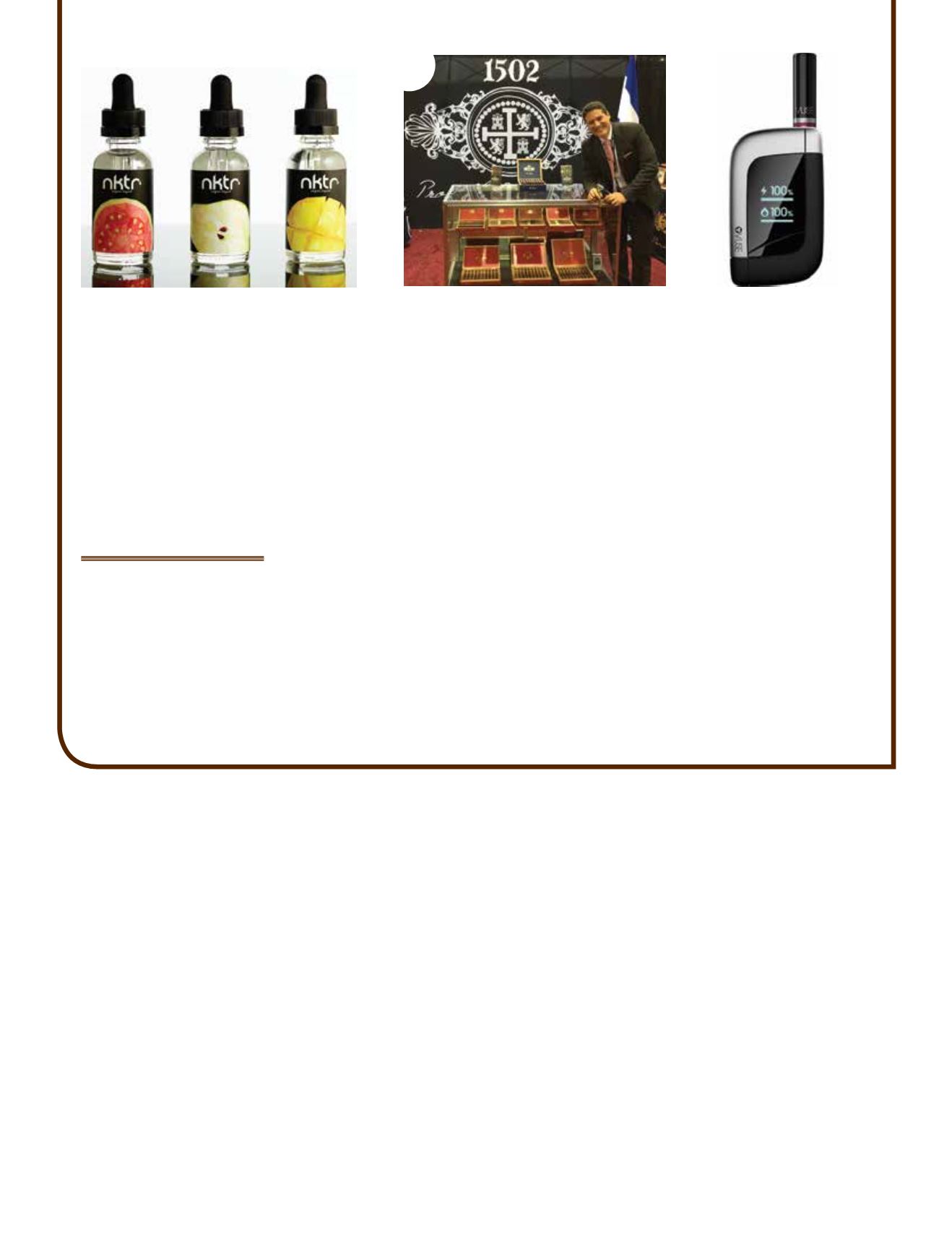

regulations may be struck down in court or
modified by legislative action to make com-
pliance more feasible.All together,there have
been eight lawsuits challenging the deeming
regulations thus far and more are expected
to be filed in the coming months. There’s
also a bill before Congress that contains an
amendment seeking to change the predicate
date—or the date by which a product had
to be on the market in order to be exempt
from the new tobacco product application
processes set forth by FDA.The bill’s Cole-
Bishop Amendment would change that date
from February 15, 2007 to August 8, 2016.
“This bill will still need approval by the
full House, the full Senate, and then be
signed by the president…so we are not sure
if it will get enacted or not,” says Briant.
More Regulation on the Horizon?
While many hold out hope for the tide
to turn, there is also fear that the require-
ments already in force are just the begin-
ning of a tidal wave of regulatory actions.
“FDA claims that the deeming regulations
are what they call ‘enabling regulations’—
that is, they enable the agency to issue more
regulations on tobacco products in the fu-
ture,” says Briant. “One possible addition is
extending a self-service display ban on all
newly deemed products so that pipe tobac-
co, e-cigarettes and hookah products could
not be displayed in self-service displays.”
However, lawsuits may well play a part
in what happens in the months to come.
“Several lawsuits claim that FDA exceed-
ed its authority by extending its regula-
tion to e-cigarettes and vapor products,”
says Briant. “They argue that it is not
reasonable to apply regulations that gov-
ern cigarettes to e-cigarettes and/or vapor
products because cigarettes are combus-
tible and e-cigarettes have no combus-
tion. They also claim [that] FDA failed
to adequately quantify the benefits of the
regulations and that the agency underes-
timates the cost of the regulations to [the]
industry, so FDA cannot now claim that
the benefits outweigh the costs, which is a
requirement under federal law.”
As the legal battles wage and the indus-
try trundles toward compliance deadlines,
retailers are waiting for the dust to settle
and a new normal to emerge. It may be a
long wait.
TBI
As an industry that has
repeatedly weathered regula-
tory changes, the tobacco
industry is better equipped
than most to survive this
current challenge. From filing
lawsuits to debuting new
technologies, companies are
showing grit and determina-
tion in the face of adversity.
Here’s a look at how some
have responded.
1
E-liquid company
SQN
is introducing three lines of
new e-liquids called “NKTR,”
“NKTR Sour” and “Melt” that
use
synthetic, lab-made
tobacco-free nicotine
manu-
factured by Next Generation
Labs, a company co-founded
by Ron Tully, consultant to Na-
tional Tobacco and the Vapor
Technology Association. “The
synthetic nicotine has the
same molecular formula as
the ‘natural’ nicotine derived
from tobacco plants, but may
potentially skirt FDA regula-
tions that took effect August
8,” noted a recent report
by the TMA. “The Tobacco
Control Act defines tobacco
products as ‘any product
made or derived from tobacco
that is intended for human
consumption, including any
component, part, or acces-
sory of a tobacco product.’”
FDA has said that the status
of products incorporating syn-
thetic nicotine will be evalu-
ated on a case-by-case basis.
Other companies report-
edly using synthetic nicotine
include
Coastline, CRFT Labs
,
and
KVASS
.
2
Miami, Florida-based
Global Premium Cigars
,
which owns the 1502 Cigars
brand, filed a
lawsuit
June 1
in the U.S. District Court in
Miami arguing, among other
things, that the rules violate
its First and Fifth Amendment
rights and the rights of its
owner, Enrique Sánchez. The
company urged the court to
vacate the deeming rule and
issue a preliminary injunction
to prevent FDA from taking
any action pending resolution
of the case on the merits.
3
Back in March,
R.J.
Reynolds
debuted several
next-generation products for it
Vuse line, including the
Vuse
FOB, Vuse Port
and
Vuse Pro
,
a move many speculated the
company made in anticipa-
tion of regulations that would
preclude further innovation
in the category and push
existing products made by
smaller companies out of the
market. RJR, however, simply
positioned the introductions
as the next step for its vapor
business.
“Adult tobacco consum-
ers are looking for a vapor
experience that delivers the
performance and satisfaction
of a tank, with the simplicity
of a cig-alike,” promised Brice
O’Brien, executive vice presi-
dent, consumer marketing for
R.J. Reynolds Tobacco Com-
pany. "And that’s what the next
generation of Vuse will deliver.”
RJR, of course, is one of the
few manufacturers with deep
enough pockets to undergo the
FDA application process.
Will Innovation be the Answer?
1
3
2
36
TOBACCO BUSINESS INTERNATIONAL
SEPTEMBER/OCTOBER 2016
















